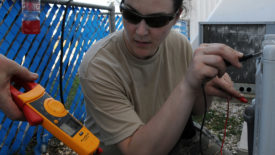Articles by Mike McCullion
SNIPS NEWS safety contributor Mike McCullion goes through a brief guide to safety program evaluations from the American Society of Safety Professionals.
Read More
Electrical Safety Program Essentials for Contractors
Compliance with the numerous codes, regulations and standards regarding electricity can be a daunting task. Here's where to start.
Read More
Important Topics in a Vehicle Safety and Fleet Management Program
Clear communication of and strict adherence to the program's guidelines and procedures are essential.
Read More
How to Plan a Safe 2023 in the Sheet Metal Industry
Get all department heads together on a regular basis to review any safety and health concerns or issues.
Read More
Is Your Company HAZCOM Compliant?
Two items to consider including in a HAZCOM program are multi-employer worksites and non-routine tasks.
Read More
Indicators of Success in Safety
Once goals are set, how do you “measure” the success or failure? One tool for companies is to look at leading and lagging indicators.
Read More
Are your Fire Prevention Plans Up to Date?
Here are the fire safety OSHA standards that pertain directly to sheet metal and HVAC work.
Read More
Fall Prevention Deserves Your Attention
According to OSHA, falls continue to be the leading cause of fatalities in the construction industry.
Read More
Copyright ©2024. All Rights Reserved BNP Media.
Design, CMS, Hosting & Web Development :: ePublishing









